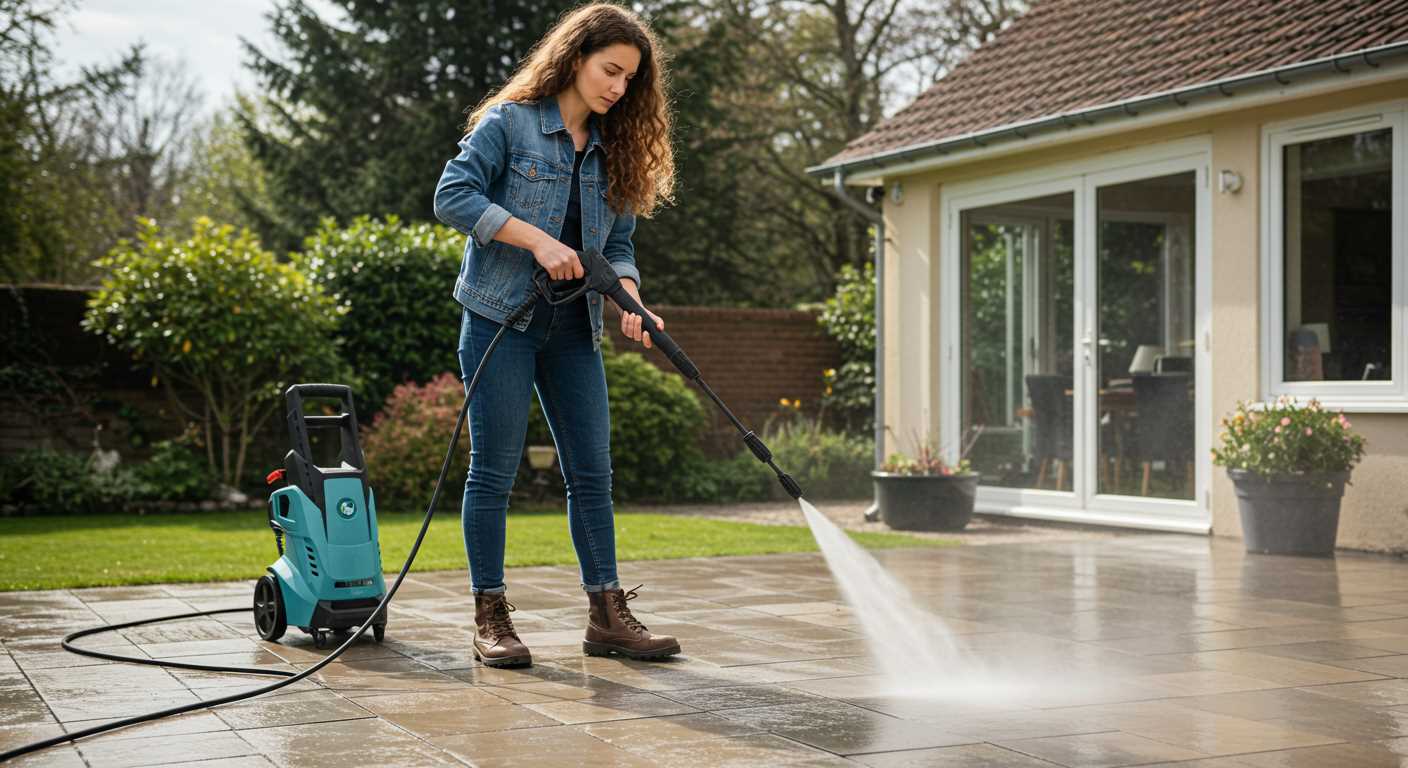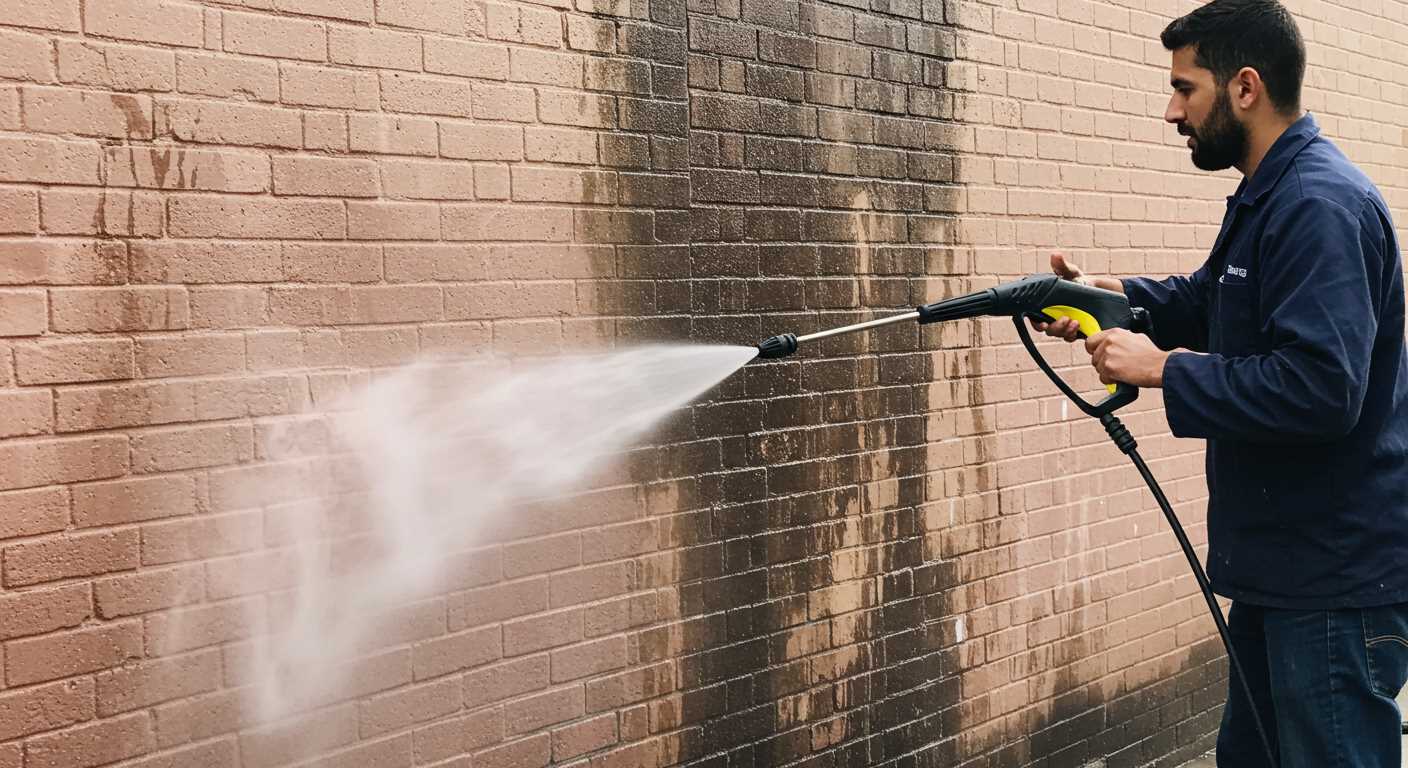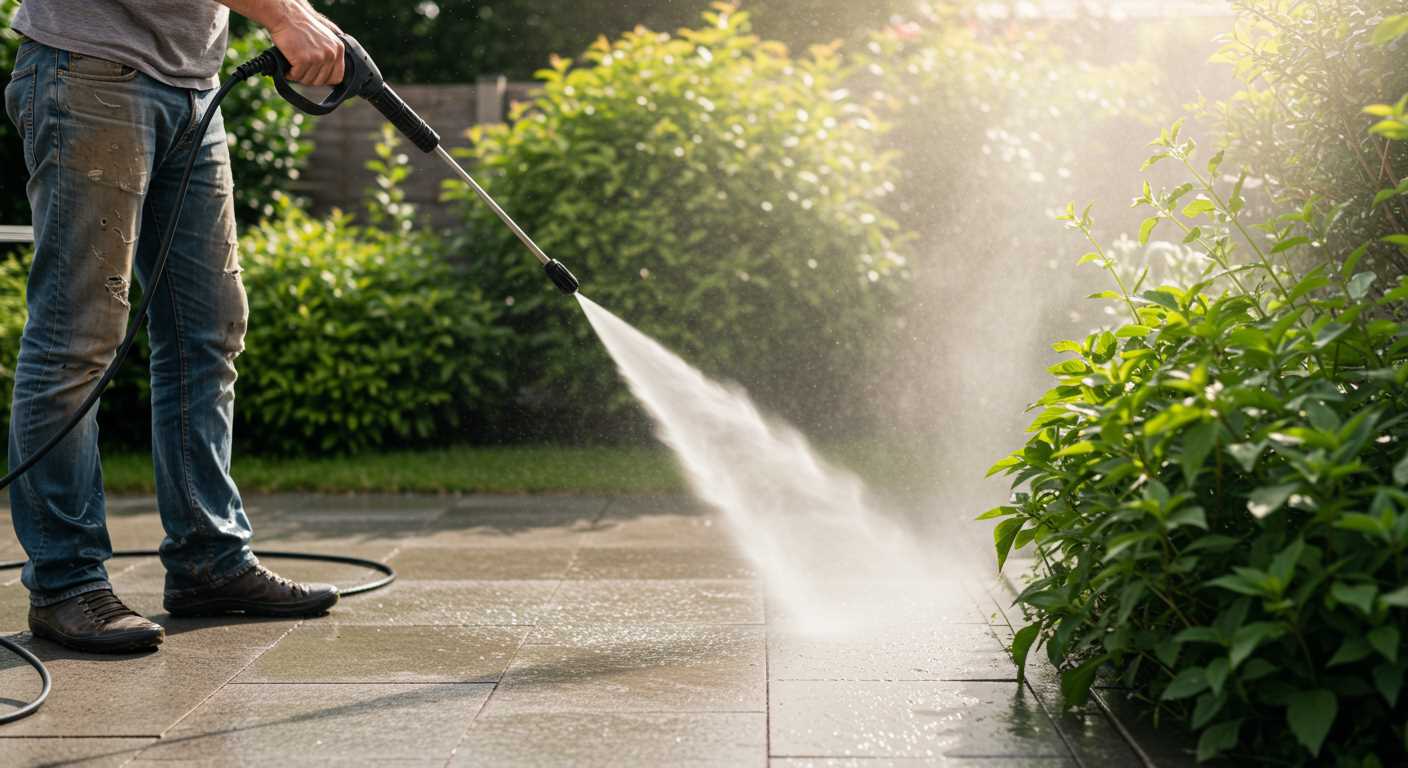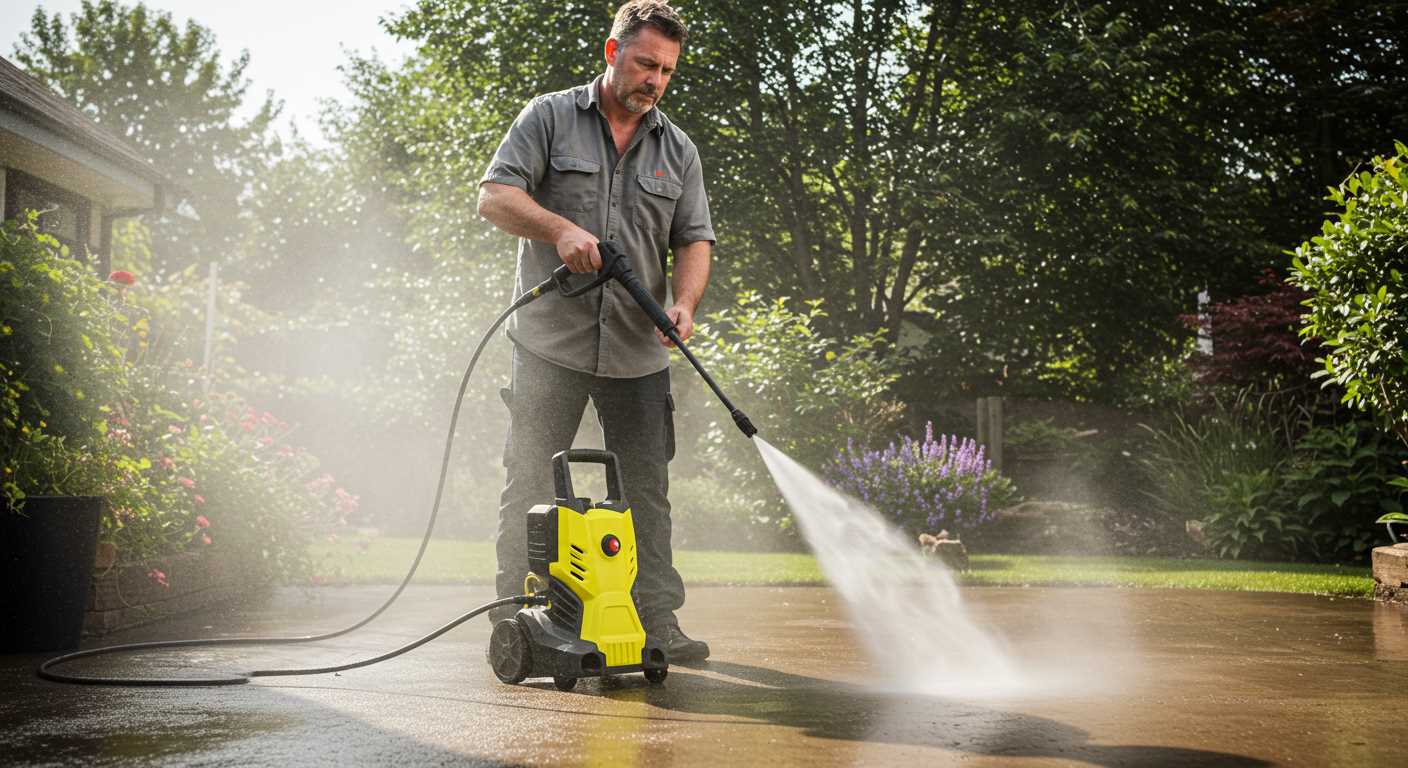



For anyone considering this type of cleaning apparatus, it’s crucial to know that it operates by forcing unheated liquid through a high-pressure nozzle, allowing for effective removal of dirt and grime on various surfaces. This method is particularly beneficial for tasks involving vehicles, patios, and outdoor furniture, where hot water is unnecessary. You’ll find that models vary widely in terms of pressure ratings, suited for everything from light cleaning to more demanding tasks.
In my years of experience in the cleaning equipment industry, I’ve encountered many situations where individuals underestimated the importance of selecting the right pressure setting. A machine with a suitable PSI (pounds per square inch) rating, typically between 1,300 to 2,500 PSI for residential use, can save time and enhance results significantly. Beyond pressure, pay attention to the flow rate, as it directly impacts how quickly you can complete a cleaning job.
Manuals and product specifications often provide insights into suitable applications for particular models. Familiarising yourself with these details can prevent you from choosing a device that may cause damage or fail to meet your cleaning needs. Additionally, ensuring compatibility with various attachments like surface cleaners or detergent dispensers can enhance versatility and efficiency when tackling tough jobs.
Understanding the Basics of Cold Water Pressure Washers
Choosing a unit requires information about its components and applications. These machines primarily utilise ambient temperatures to perform cleaning tasks, making them perfect for various surfaces.
Key Features
Focusing on specifications can aid in selecting the right model. Most of these devices offer a range between 1000 to 3000 PSI, ideal for tasks such as removing dirt from patios, vehicles, and furniture. The flow rate typically ranges from 1.5 to 2.5 GPM, influencing how effectively they eliminate grime.
Applications

Diverse settings benefit from these cleaners. Residential spaces often see their use on driveways and decks. Commercial establishments employ them for maintaining storefronts and outdoor furniture. The versatility makes them valuable for both home and business upkeep.
Key Components of a Cold Water Pressure Washer
A thorough understanding of the main parts involved in a high-pressure cleaning device is crucial for effective operation and maintenance. The following components play a significant role in the overall functionality of these machines.
Motor or Engine
The power source, either electric or petrol-based, drives the unit. An electric motor is quieter and often more suitable for residential use, while a petrol engine offers portability and higher power output, making it ideal for outdoor tasks. Choose based on your cleaning requirements and access to power sources.
Pump
The pump is the heart of this cleaning equipment. It pressurises the liquid and ensures a robust flow rate. Axial pumps are commonly found in lower-priced models, suitable for light-duty tasks, while triplex pumps are designed for heavy-duty applications, providing longevity and superior performance. Regular maintenance of this component ensures optimal performance and extends the service life.
Further attention to the inlet and outlet connections is essential, as these determine the efficiency and ease of use during applications. High-quality hoses and nozzles will support seamless operation, allowing for better manoeuvrability and access to hard-to-reach areas.
Typical Applications for Cold Water Pressure Washing

For exterior cleaning tasks, a high-powered machine excels in removing dirt and grime from surfaces such as driveways, patios, and decks. This application is particularly beneficial for seasonal cleaning and maintenance, ensuring that outdoor spaces remain welcoming.
Industrial and Commercial Use
In industrial settings, machinery and equipment can accumulate grease and other contaminants. A powerful cleaning solution swiftly tackles these residues, enhancing equipment longevity and operational efficiency. Additionally, commercial properties benefit from regular maintenance, as it upholds aesthetic standards and safety regulations. Surface preparation is crucial before painting or sealing, making this method invaluable.
Vehicle Cleaning
Vehicles, including cars, trucks, and trailers, require frequent cleaning to maintain appearance and prevent corrosion. The strong jets can easily remove mud, salt, and other road debris. This not only enhances the vehicle’s lifespan but also improves visibility and safety on the road.
| Application | Benefits | Recommended Pressure (psi) |
|---|---|---|
| Driveways | Removes oil stains and dirt | 2500 – 3000 psi |
| Patios | Restores appearance and prevents mould | 2000 – 2500 psi |
| Equipment cleaning | Increases longevity and efficiency | 3000 – 4000 psi |
| Vehicle cleaning | Enhances safety and prevents corrosion | 1500 – 2000 psi |
Understanding these specific applications ensures that users can effectively utilise this cleaning technology for optimal results, saving time and effort while achieving a high standard of cleanliness.
Benefits of Using Cold Liquid Over Hot Liquid
Opting for a unit that dispenses non-heated fluid can be highly advantageous in various scenarios. One notable benefit is the safety factor. Non-heated units reduce the risk of burns or accidents that can occur when handling hot fluids. This safety aspect becomes crucial in environments with children or pets.
The environmental impact also favours non-heated usage. Heating liquid requires additional energy, which increases the carbon footprint during operation. By choosing a unit that operates without heating, you contribute to energy conservation and lower emissions.
Cost-Effectiveness
Units that utilise non-heated solutions often have lower operational costs. The absence of a heating element means less wear and tear, ultimately leading to reduced maintenance expenses. Moreover, many detergents function effectively with non-heated solutions, enabling efficient cleaning without the additional energy cost.
Compatibility with Various Surfaces
Utilising non-heated solutions is gentler on certain delicate surfaces. For instance, painted surfaces, wood, or certain types of automotive finishes can suffer damage from the high temperatures associated with heated options. Maintaining the integrity of these surfaces is essential in ensuring longevity and protecting investments.
In conclusion, the choice of a device that operates with non-heated fluid presents numerous advantages, ranging from safety and environmental considerations to cost efficiency and surface compatibility. It’s a pragmatic choice that aligns with both operational needs and sustainable practices.
How to Choose the Right Cold Water Pressure Washer
Determine the required cleaning power first. Measured in PSI (pounds per square inch), this specification indicates the force of the spray. For light tasks like washing vehicles or outdoor furniture, a unit with 1300-1900 PSI suffices. Heavier jobs, such as cleaning driveways or siding, benefit from models offering 2000-3000 PSI.
Assess the GPM (gallons per minute) next. This figure speaks to the water flow rate. Higher GPM ensures less time spent on cleaning. A flow rate of 1.5-2.5 GPM serves adequately for most household tasks, while commercial or larger residential projects may demand 3 GPM or more.
Consider Portability and Storage
Weight and mobility play significant roles in usability. If you have limited storage space, opt for a lightweight model with easy transport features. Look for units with wheels and ergonomic handles that allow for comfortable manoeuvrability.
Evaluate Accessory Compatibility

Maintenance and versatility enhance functionality. Check for compatibility with various nozzles, brushes, and extensions. Adjustable nozzles permit different spray patterns, allowing you to switch from a direct jet for tough stains to a wider fan for delicate surfaces.
Lastly, read customer reviews and expert recommendations on various models. Real-world performance insights provide invaluable information on durability, ease of use, and overall effectiveness. Prioritising these factors assists in making a well-informed decision.
Common Maintenance Tips for Cold Water Pressure Washers
Regular upkeep enhances performance and prolongs life expectancy. Here are some practical tips:
Daily Maintenance Practices
- Check oil levels before each use and replace if necessary.
- Inspect hoses for cracks or leaks; replace any damaged parts immediately.
- Keep the nozzle and spray gun clean to prevent clogs.
- Flush the system with clean water after use to eliminate detergent residue.
Periodic Maintenance Schedule
- Every month, examine and tighten all screws and fittings.
- Inspect and replace filters as needed to ensure optimal water flow.
- Lubricate moving parts to reduce wear and improve overall function.
- Check the ignition system (for models that require it) to guarantee efficient starting.
Storing properly is equally essential. Ensure the unit is kept in a dry, sheltered location, ideally with a cover to protect against dust and moisture. Additionally, remove any accessories and store them separately to prevent wear. Consistently adhering to these routines can save money and improve cleaning efficiency.
Safety Precautions While Operating a High-Pressure Cleaning System

Always wear proper personal protective equipment (PPE). This includes safety goggles to protect your eyes from debris, gloves to shield hands, and sturdy footwear. Ensure your clothing is not loose to avoid entanglement with equipment.
Before starting the machine, verify that all connections are secure. Check hoses for any signs of wear or damage. Replace any damaged hoses immediately to prevent accidents.
Operational Guidelines
- Keep the work area clear of children and pets. Assign a designated spot for bystanders to ensure safety.
- Maintain a proper stance and balance while using the equipment. Hold the spray wand with both hands to maintain control.
- Do not point the nozzle at yourself or others, even when the machine is turned off. Pressure can linger in the system.
- Be mindful of the surface being cleaned. Certain materials may be more delicate and require reduced pressure.
- Do not operate the apparatus while standing on ladders or unstable surfaces; stability is key for safety.
Post-Operation Practices
After use, always release any remaining pressure in the system before performing maintenance or storage. Disconnect hoses and store them properly to prevent wear.
Regularly inspect the equipment for any leaks or damage before using it again. Keeping everything in optimal condition promotes safety and efficiency.
Use warning signs or cones in the vicinity to alert others when the apparatus is in use. Clear communication helps avoid injuries.
Comparing Cold Water Pressure Washers with Hot Water Models
Choosing between cold and heated units primarily hinges on cleaning requirements. For general dirt and grime removal, cold models are typically sufficient. However, heated counterparts excel at tackling oil, grease, and stubborn stains due to their elevated temperatures, which enhance cleaning efficiency.
Performance and Efficiency
Cold units often operate at lower costs, as they don’t require additional energy for heating. This translates into savings on both electricity and maintenance. In contrast, hot models utilise a heating element, which can lead to increased operational expenses over time. When considering speed, heated options may reduce cleaning time significantly, due to their ability to break down tough substances more effectively.
Versatility in Use
For various tasks, cold models are versatile, ideal for outdoor patios, vehicles, and lighter cleaning jobs. While hot models are more suited for industrial applications where challenging stains frequently occur, they may also be overkill for lighter tasks. Evaluating the intended uses shapes the decision, as both types serve unique purposes in cleaning contexts.
Ultimately, I recommend assessing the specific cleaning tasks at hand, along with budget considerations, to determine the appropriate model. Prioritise efficiency, effectiveness, and the nature of your cleaning jobs to guide your choice wisely.








